The Silk Road is an almost mythical route in the minds of many travellers. Conjuring up images of vast camel trains of thousands of beasts of burden, traversing spectacular mountain passes, deserts and rivers,to transport Chinese Silk to the outposts of the Roman empire in the Mediterranean, Europe and Africa .The reverse route saw precious stones and sandalwood from India, saffron and silver from Persia, frankincense and myrrh from East Africa, carried up to 4000 miles to be traded in Han Dynasty China . Along the route were Caravan-serai’s which were a sort of early travellers hotel and meeting place. Many of these remain in various states of dereliction along the old routes. A visit to a dark and deserted caravan-serai on a lonely mountain pass is a spooky, but not to be forgotten experience.
To drive the ancient Silk Route would be many travellers ideal classic roadtrip. Unfortunately, re-creating the Silk Route journey is not an easy feat in modern times. The first of many problems for modern day travellers wanting to re-create the Journey, is identifying exactly which route to follow. There were two main variations – A Northern and Southern Silk Route with multiple spurs deviating from the main route to pass through or near important trade centres. There isn’t therefore a single clearly defined Silk Route.
The Northern route started at Xian in China,and travelled via various branches through Kyrgyzstan,Tajikistan, Kazakhstan, Uzbekistan, Afghanistan, Turkmenistan, through the Caucasus, past the Aral and Caspian Seas and onto the Black sea.The southern route ran from China, through the Karakoram mountains, where it remains as the international paved road connecting Pakistan and China – the famous Karakoram Highway. This route then passed through what’s now northern Pakistan, over the Hindu Kush mountains, and into Afghanistan, then rejoined the northern route in Turkmenistan. From there, it ran through Persia , now Northern Iran, onto Syria and Egypt where trading ships sailed to Europe, while land routes went either north through Turkey or south to North Africa.
The routes crossed deserts, rivers and high mountains and spawned important trade centres, some of which remain today ,with names to stir the imagination such as Merv (Turkmenistan), Samarkand and Tashkent (Uzbekistan); Otrar, and Chimkent (Kazakhstan), Tash-Rabat and Osh (Kyrgyzstan).
There are a number of obstacles facing drivers wanting to travel the whole Silk Route today, Especially those hoping to use a Self Drive rental car. Not surprisingly its impossible to rent a vehicle in ,say, Syria and drive to China. It is however possible to undertake the drive in one’s own vehicle but there’s a lot of red tape to cut through to transport vehicles across many international borders.
Therefore, based on the assumption that travellers may rent a car and drive sections of the route where its possible, I’ll break the trip down into sections by country , covering the Central Asian regions most associated with the Silk Road – Turkmenistan, Uzbekistan,Tajikistan, Kyrgyzstan and on into China.I’ll also try and provide information on crossing land borders between countries where possible, but please bear in mind that this information can change quickly and often, so if you are considering driving the whole route, it would be wise to make contact with each country and get an up to date and accurate view on their policy on taking foreign registered vehicles across their land borders and documentation needed to do this.
Ashgabat is the obvious point of entry to begin your journey. Unfortunately, I have been unable to locate a self drive car rental option in Turkmenistan. Local travel agent www.ayan-travel.com told me that self drive is currently ‘forbidden’ and that you need a guide to travel outside the capital.If you’re in town on a Sunday, be sure to visit the Oriental market or Jygyldyk for its camel sale to get you in the mood to retrace the steps of the caravans of ancient times.From Ashgabat, drive 380km (5hours) to Mary , the site of the ancient trading town of Merv, which at one point was the largest city in Asia. From Mary drive 300km (5 hours) to the Uzbek border at Farab Alat. The latest information I have is that foreign cars are able to cross this border in both directions.Alternatively head North to Dasoguz, where again I believe foreign cars can cross the border. The benefit of transitting to the North is that you can then visit Uzbekistan’s first world heritage site town and ‘museum under the sky’ –Khiva.
This company rents self drive vehicles in Uzbekistan and has outlets throughout the country and should be able to arrange a vehicle in either Bukhara or Nukus, and may allow one way rentals to Tashkent.
www.carrental.uz/
From the Turkmenistan border at Farab Alat its around 80km to Bukhara, the world heritage site City with its many mosques and madrasas and ancient Islamic architecture. If you cross the border at Dasoguz, you’re likely to head first to Nukus, then around 50km off the main 380 road to the mosques and minarets of Khiva. Khiva to Bukhara is 628km, though the road (Route 380) is generally in good condition so you should be able to cover the distance in a day and you’ll see the landscape change from tree lined farmland to a more desert-like terrain as you near Bukhara.
From Bukhara, travel 280km, 4hrs,through wooded hills and pastures to the ancient City of Samarkand, with its famous square and mausoleum of Tamurlane/Timur, the great 14th century warrior and national hero.
From Samarkand, its 315km, 5hrs, to the Uzbek capital, Tashkent. Tashkent is mostly a modern soviet style City having being rebuilt following an earthquake in 1966, but it has an atmospheric old town and some interesting museums and monuments.
An alternative to travelling to Tashkent, is to head South from Samarkand, through Shakhrisabz, the site of Tamurlanes Summer Palace, to Termiz on the Uzbek/Afghan border. From there, you can join the Pamir Highway (M41) which is seen as classic Silk Route road , running North into Tajikistan, and Kyrgyzstan.
If you opt to take the Pamir Highway you’ll cross the Tajik border at Sorgun and head for Dushanbe. My understanding is that foreign cars can cross this border and it’s open all year. If travelling from Tashkent on the A376 you will cross the border at Oybek/Bustan which I believe is only open in Summer and I have no info on whether foreign cars can be taken across that border. Another option is to take the A377 east out of Samarkand towards the border near Penjikent . Again I have no info on whether foreign cars can cross that border.
Historically there have been disputes between Uzbekistan and Tajikistan which have resulted in borders being closed at short notice. Also, especially at the border crossings from Tashkent and Samarkand, the borders may be closed due to bad weather, or for long periods in Winter.
Tajikistan–
Unfortunately Tajikistan is another country where, at present, its not possible to rent a self drive car. The best you can probably hope for currently is an unofficial rental. i.e ‘borrow’ one from a local. This is possible if you have legal permission from the owner. To obtain this permission, you need to go with the owner to a notary office. There is one for each district in Dushanbe. You need to present the vehicle owner’s passport and your passport, and ask the notary to draw up a power of attorney document (devernost). This document can be valid for any length of time up to a maximum of three years. This will give you legal permission to drive the vehicle.
As stated above you should be able to take a foreign registered vehicle into Tajikistan, dependent on the border you cross. Not surprisingly there is red tape to cut through and documents to fill in though I’ve only managed to find copies in Russian, so am unsure of what information you actually need! I’d advise contacting the Tajikistan embassy in your own country – they should be able to provide up to date info on documentation needed.Also the Travel agency mentioned below should be able to offer advice,
You may choose to spend a day checking out the few museums and points of interest in Dushanbe, or you may decide to carry on along the Classic Silk Road route followed by the Pamir Highway . The Pamir Highway between Tajikistan and Kyrgyzstan passes through the Gorno-Badakhshan Autonomous Region and you need a permit to drive this route which you should apply for at the same time as your Tajikistan Visa. If you haven’t you may have an enforced stay in Dushanbe – it can take 2 weeks to get the permit! f you don’t get a road permit with your Visa, you can obtain one in Dushanbe –
OVIR Dushanbe Mirzo Turzunzade Street 5 – Tel. 227 67 22 (no English). Opening hours: 8am-5pm.
From Dushanbe, the Pamir Highway heads South East to Khorog ,the capital of Gorno-Badakshan , crossing the Kafirnigan, Vakhsh, and Bartang Rivers, and running close to the Afghan and Pakistan Border areas. At times villages on the Afghan side of the border are only 100 metres away and near Tavil-Dara, rusting debris from the 1992 in the form of armoured vehicles can still be seen by the roadside. From Khorog, the road continues to Murghab, Tajikistan’s highest town at 3650m in the Pamir Mountains. There, it crosses the Murghab River and begins to head North. The highway then passes through the Ak-Baital pass, which at 4600m is the highest road in the former USSR, then past Lake Karaqul at 3900 metres before crossing into Kyrgyzstan via the Kizyl-Art Pass. The Pamir Highway is prone to landslides and avalanches in winter, so check road conditions in Khorog and Murghab before departing.There are also few services between Murghab and the border. I have no information on whether foreign cars are allowed to cross the Kizyl-Art border at present, and would suggest you verify this with the embassies of both Tajikistan and Kyrgyzstan in your country just before departure and ask for them to verify this in writing in both English and Russian.
Kyrgyzstan
The company below can arrange self drive vehicle tours in Kyrgyzstan but my understanding is you have to take one of their guides with you. They should also be able to offer advice on documentation needed to take a foreign registered car into the country –
http://www.silkroadtourkg.com
From the border at Kizyl-Art pass, the Pamir Highway heads north to the small village of Sary-Tash . Though only containing a scattering of cafes, a gas station and a couple of guest houses, Sary-Tash is an important transport hub. Heading north the M41 goes over the Taldyk Pass to Gulcha and Osh in the Ferghana Valley, which is a spectacular drive, and the end (or start!) of the Pamir Highway. The 1250 KM drive from Dushanbe to Osh will take a minimum of 4 days, though bank on longer for sightseeing with the 700 km stretch between Khorog and Osh widely acclaimed as one of the most scenic, and challenging, in Asia. Osh is Kyrgyzstan’s second City and one of the oldest in Central Asia with a large outdoor market and close proximity to the only World Heritage Site in Kyrgyzstan, the Sulayman Mountain, which offers great views of the town. From Osh, the route heads North via the Chichkan Valley to the cross roads town of Kara-Balta and the main road to Bishkek. If you plan to head into China though, the obvious route is to head East from Sary-Tash along the A371 to the Irkestam pass into Xinjiang Province and Kashgar which is around 200km East from the border. The other potential entry point is the Torugart pass 165KM to the North. My understanding is that the Torugart pass closes in Winter but the Irkestam pass stays open throughout the year. Foreign vehicles can cross the border providing you’ve arranged the appropriate paper work for China (see below)
Into China
A number of companies can arrange paperwork to take your own vehicle into China and others can arrange self drive vehicles (though you need to be accompanied by a guide). You need to arrange this well before your trip as it can take 6 months to arrange the necessary paperwork.
This company can arrange the documentation for vehicles to enter China though it sounds like you need to employ one of their guides for the duration of your visit to the country.
This company can offer advice on permits and documentation needed to take a vehicle into China – http://www.navo-tour.com/
This company run self guided tours on the Silk Road and Tibet –
http://www.chinaexploration.com/Overland/Silk-road-Tibet-Self-Driving-Tour.html
Arriving in Kashgar (Kashi) in time to witness the camel sales at its famous Sunday market would be the perfect end to your Silk Road adventure. The town was an important Silk Road junction, with branches heading South along the Karakorum Highway into Pakistan and the Northern branch following the route you’ve just taken.
If anyone has completed the above journey, either fully or any of the stages, I’d be interested in hearing your experiences and any updates you have on border crossings, state of the roads etc. If you are a local car rental company who would like to feature on DriverAbroad.com please check details on our Partnering page or contact us on ADriverAbroad@Outlook.com
Although I try and keep the information in the site updated as much as possible, in a rapidly moving world, situations can change daily. Therefore please use the site as an approximate guide, and in conjunction with other resources in order to form your view on driving conditions, roads, safety etc.

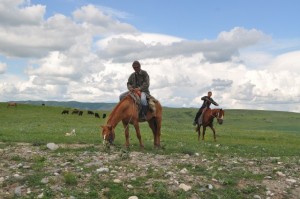
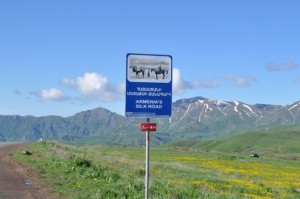

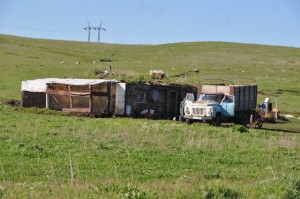
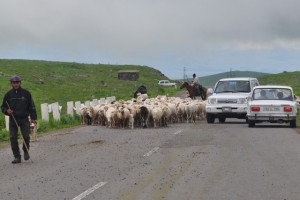

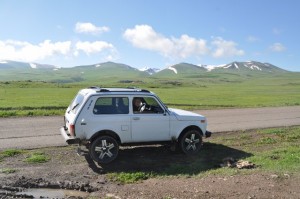
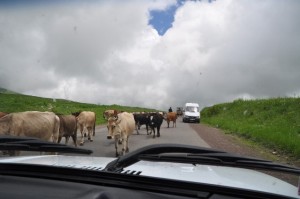

7 comments